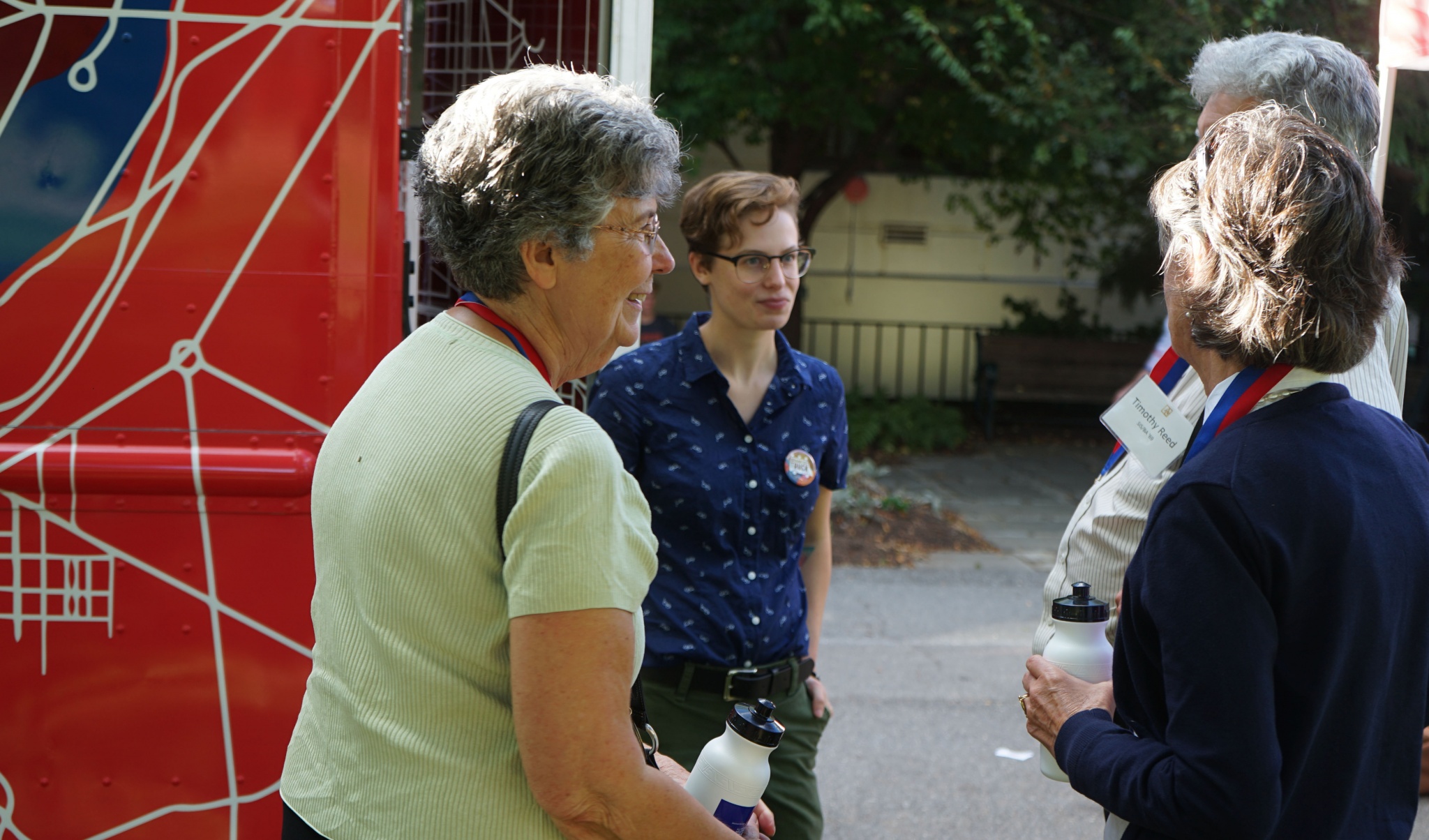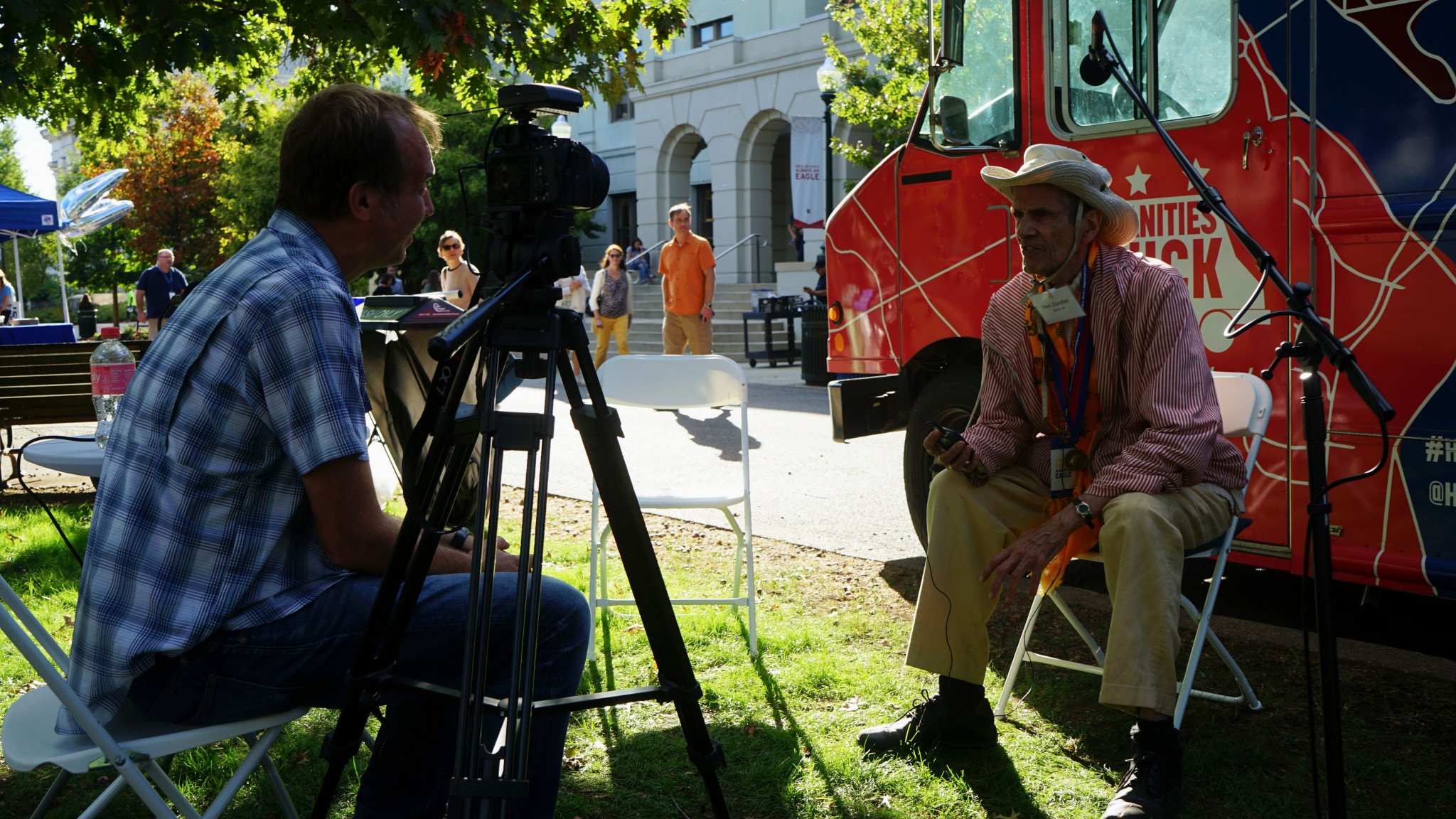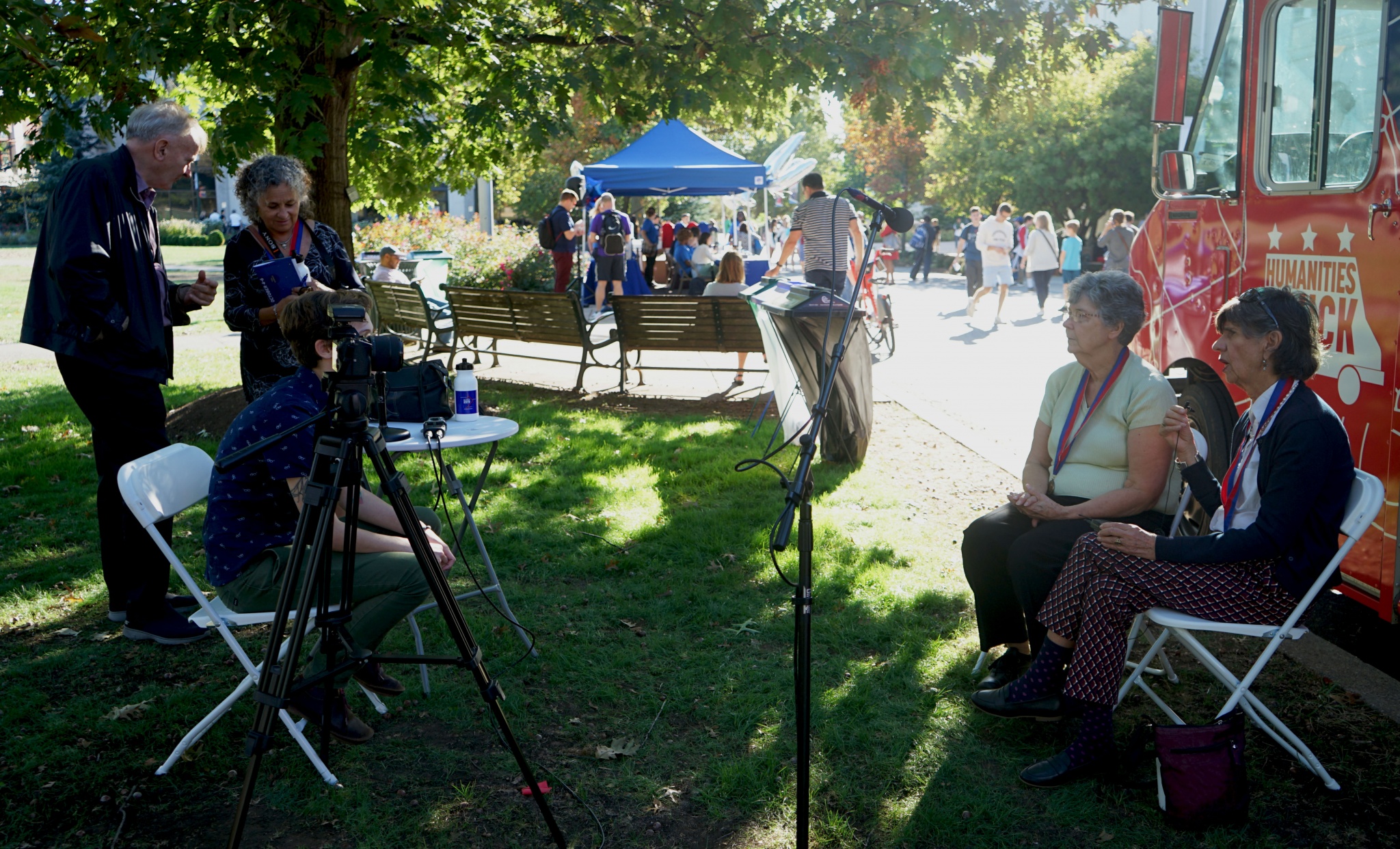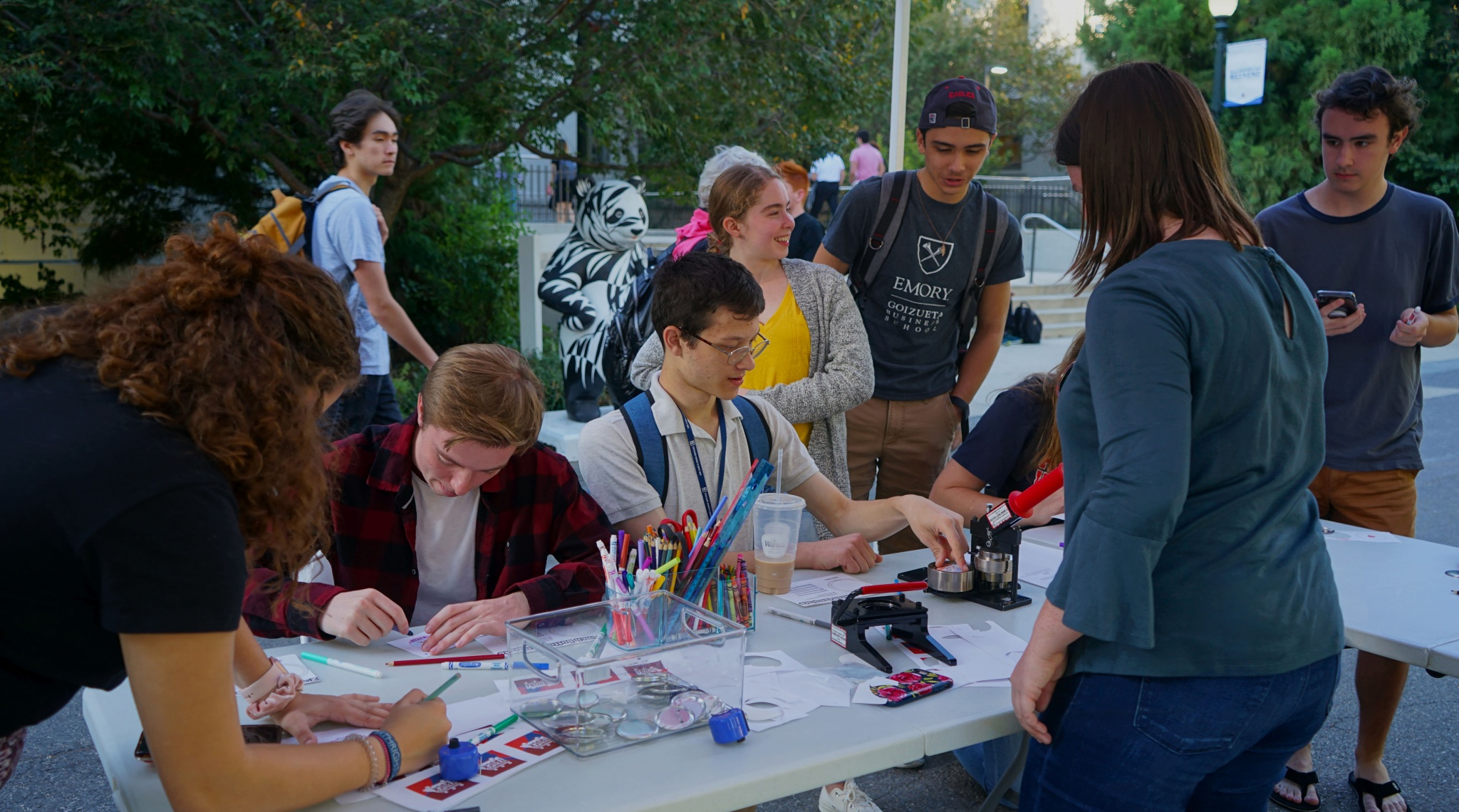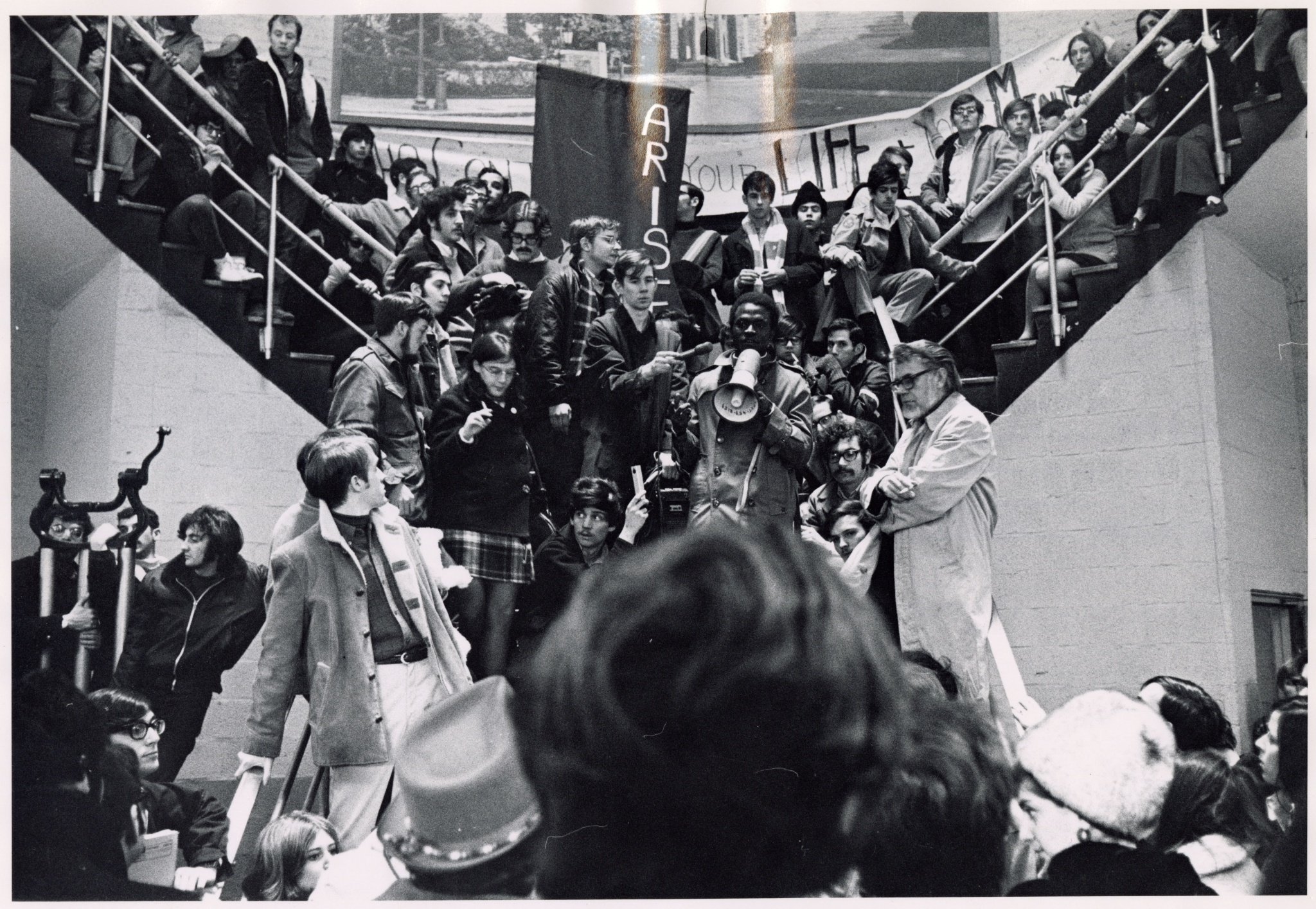Class of 1969
Student journalists for The Eagle named the American University academic year 1968-1969 a year of protest and reform.
Campus drinking laws loosened.
Students created a new experimental, interdisciplinary course called University and Revolution.
AU’s ninth president, George Williams, was inaugurated.
Members of AU’s campus fought for university reform through the Tripartite committee and student-led groups such as OASATAU, a New AU, and Students for a Democratic Society (SDS).
Throughout the year, AU students took an increasing interest in local, national, and international events.
Beginning with Orientation and Registration and ending with Commencement, this exhibit highlights campus life and major events during the academic year.

Campus Life




The 1968-1969 academic year may be known for its period of student protests, however many aspects of campus life have remained the same and would be recognizable today. Students engaged in a wide spectrum of academic, university and non-university social activities, athletics, and events.
Many American University students participated in local, national, and international political and social activism. One example includes a student-organized humanitarian campaign to supply aid to Biafra during the Nigerian Civil War. Other students demonstrated their social awareness by participating in a tutoring program in the District.
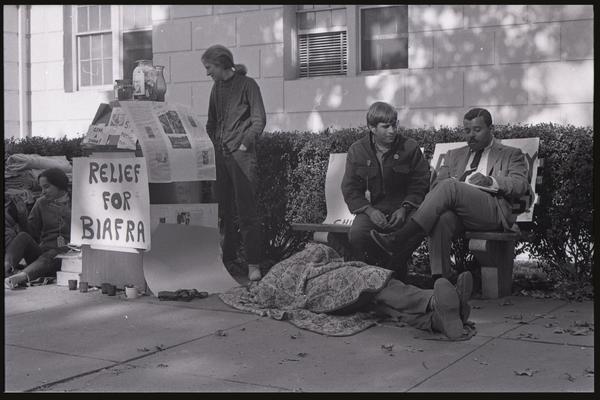



President Williams’ Inauguration
The ninth president of American University, George Howard Williams, was inaugurated on Wednesday, October 16, 1968. In his speech, President Williams called his inauguration a “new era in the life of a university determined to be a major resource in the life of our nation.” Williams urged further University participation in Washington, D.C., announced plans for curriculum reform, and called on the entire AU community to assert leadership and assume the responsibility of making teaching at AU relevant.

KPU Speakers
Since its founding in Fall 1968, the Kennedy Political Union (KPU) has remained true to its mission as a non-partisan, student-run, student-funded, lecture series. By inviting speakers across the political spectrum to campus, KPU engages AU students, faculty, and staff. Over the years, KPU has established a culture of service and responsibility by broadening interest in social and political activities on campus. The range of KPU guest speakers reflects AU’s commitment to valuing diversity.

Prior to his visit, Adam Clayton Powell represented the Harlem neighborhood in New York City in the United States House of Representatives, and served as chairman of the Education and Labor Committee. At the time of his visit to American University, however, he had recently been subject to an investigation by the Judiciary Committee, and the House voted to exclude him, an action the Supreme Court later found unconstitutional. Shortly after this speech, he was re-elected to the seat he had vacated but was voted out by constituents in 1970.
Roy Cohn was an American lawyer known for his work with Senator Joseph McCarthy in the 1950s and later, after his September 26, 1968 visit to American University, he went on to become Donald Trump’s personal lawyer.
“University and Revolution”
During the fall semester of 1968 at American University, former Assistant Dean of International Service, Gary Weaver, and Chairman of the Department of Economics, Dr. James Weaver, established a course called “University and Revolution.” Taking advantage of an organizational loophole, Gary Weaver and James Weaver created an irregular class format that was not dependent on regular class meetings, textbooks, or a heavy grading system. The program functioned as an independent reading and research course, divided into seminar sections for small group discussion. The course addressed themes relating to international and university-level revolutionary movements, with a particular emphasis and critique of the function of the university to mold students to “reproduce the quo.” During the first year of the course, the instructors published a book about the class, drawing on articles from activists regarding national student demands and social movements.
Gary Weaver and James Weaver partnered with the Student Association’s Kennedy Political Union (KPU) to finance speakers such as Black Panther Minister of Information Eldridge Cleaver, the Father of American Conservatism Russell Kirk, and investigative journalist Jack Newfield. The program ran for two years, with semester enrollments ranging between 60 and 200 students. The course was not sustainable, however, as neither professor was paid for more than a semester. Despite its early demise, “University and Revolution” contributed to the reform and expansion of AU’s curriculum by mixing up and questioning the status quo.
The Gregory Affair
KPU invited black comedian and civil rights activist Dick Gregory to speak on February 16, 1969, where he addressed an auditorium of students. Gregory referred to himself as “president in exile” after losing the 1968 presidential election to Richard Nixon. He spoke on the role of students in addressing problems in society by being politically active to respond to issues locally, nationally, and internationally.
Click to hear the speech delivered on AU’s campus.
The week following the lecture, President Williams denied the requests by the Student Association and the Organization of African and Afro-American Students at the American University (OASATAU) to host a ”mock inaugural gala” for Gregory.
According to The Eagle, student leaders rallied more than ten times during the week of February 25th and staged sit-ins within the McKinley and Asbury buildings to protest the AU administration’s decision. On March 4th, President Williams conceded and allowed students to schedule an on-campus dance after attending the mock inauguration at the Morgan Community School. The protests during the Gregory Affair established the foundation for increased student participation within the University’s administrative decisions.
The New AU
The campus movement known as “The New AU” sprang out of the Gregory Affair demonstrations during February 1969. The New AU, along with other student organizations, held numerous protests in the spring of 1969 with demands including abolishing curfew and establishing a 24 hour library, interdepartmental studies, student evaluations of faculty, and Pass/Fail grading. Together, the groups were successful in creating some change within American University’s structure. The University Senate reorganized course requirements, broke ties with the Center for Research in Social Systems (CRESS), and redesigned the police training program.
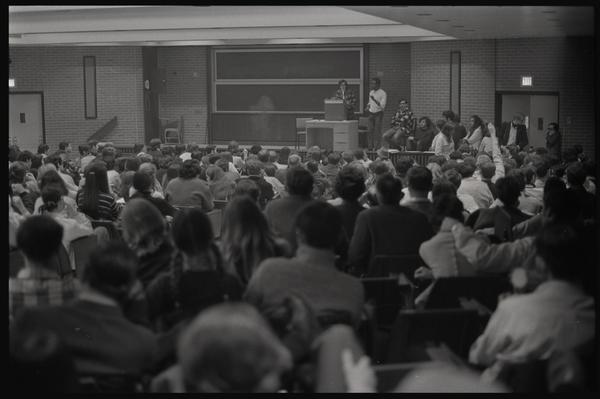

SDS Takeover
On April 23, 1969, members of the Students for a Democratic Society (SDS) took over the American University President’s Building. Their goal was to abolish AU’s relationship with the Center for Research in Social Systems (CRESS) and police training programs, as well as to advocate for academic programs in working class studies, black studies, and women’s studies. The students were forcibly removed by other AU students after a nearly eight hour occupation. After this event, The New AU planned a similar sit-in to highlight their ongoing demands and also promoted OASATAU’s long-stated needs from the administration.
Commencement
Commencement marked the end of the 1968-1969 school year. Student protest and reform had changed life considerably during the year, despite resistance from the AU administration. AU’s total enrollment during the year was around 14,000 students, and on June 8, 1969, 2,000 degrees were conferred in a ceremony featuring several leaders and activists.



Elizabeth Duncan Koontz was a leader in national education, civil rights, and the women’s movement. At the time she received her honorary degree at AU, Koontz was serving as the first African American president of the National Education Association. She was later appointed director of the United States Department of Labor Women’s Bureau by President Nixon in 1969 and continued working for women’s rights and education throughout her career.
Raul Prebisch was an Argentinian economist who was the founding Secretary-General of the United Nations Conference on Trade and Development when he spoke at AU Commencement in 1969. Previously, he had served as the Executive Director of the Economic Commission for Latin America and was known for his contributions to structuralist economics.
Reverend Channing Phillips was a minister and civil rights activist who had become the first African-American nominated for President by a major political party in 1968. He had previously headed Robert F. Kennedy’s campaign in the same year. Phillips later ran to become the first congressional delegate to the House of Representatives from D.C. Though he lost, he continued to advocate for home-rule in D.C.
Credits:
All images and documents provided by American University Archives and Special Collections.
Curated by: Leslie Nellis, Associate Archivist for Digital Initiatives and Records Management
Exhibit Design: Meghan Dieckmann, Humanities Truck
Online Exhibit: Kimberly Oliver, Humanities Truck
Special Thanks:
American University Library Archives and Special Collections
Haley Steinhilber, Student Assistant
Austin Arminio, Archives Specialist
Humanities Truck: Dan Kerr (Director), Maren Orchard, and Jenna Goff
During the Golden Eagles Reunion on October 4, 2019, we spoke to several alumni from the Class of 1969 about their time at American University.
Current AU students also stopped at the Truck to make buttons that expressed what activism means to them.





